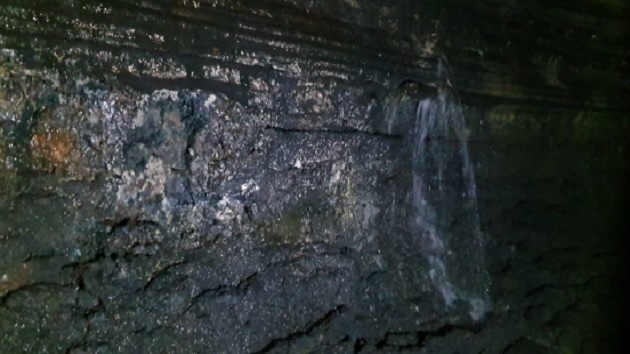
Manjanggul Cave is a UNESCO’s World Natural Heritage site and one of Jeju’s most treasured tourist attractions. However, visitors cannot enter the cave during heavy rainfall due to rising water levels inside the lava tube.
Researchers have identified the cause and discovered features of rainwater movement underground.
Todd Thacker reports.
[slug] Large quantity of rainwater reaches Manjanggul and Yongcheon caves
This is (만장굴) Manjanggul Cave after recent typhoons inundated the island with rain.
Water gushes from crevices in the cave wall.
(용천) Yongcheon Cave, which is also a part of (거문) Geomunoreum Lava Tube System, experiences the same phenomenon.
[slug] Visitors denied entry to Manjanggul Cave during heavy rain
Manjanggul Cave cannot accept visitors when it rains heavily because of rising water levels inside the lava tube.
So, what is the cause of the flow of water into these caves?
[slug] Impermeable clay layer contributes to rainwater inflow
The Jeju World Natural Heritage Center has studied these lava tubes to identify the cause.
It found that an impermeable clay layer helps direct rainwater into the island caves.
Rainwater cannot permeate the clay layer between lava beds, so it collects and flows along the layer like a stream. If there is a crack in the cave wall, water enters the tube.
[slug] Water gushes from a line of fissures
Researchers have identified 14 fissures in Manjanggul Cave and five in Yongcheon Cave which are found in a line.
[slug] Correlation between clay layer and underground water flow identified
The research team analyzed the results of a previous drilling survey to determine the association between the distribution and angle of the clay layer and underground water movement.
INTERVIEW
Ahn Ung-san / Researcher, Jeju World Natural Heritage Center
Manjanggul Cave snakes over 20 meters below ground level. The pattern of water inflow in the cave shows how underground water moves.
<인터뷰: 안웅산 세계유산본부 한라산연구부 박사>
"만장굴은 20미터 이상 깊은 곳에 위치하고 있고요. 거기서 흘러들어가는 물들의 양상은 실제로 제주도 지하에 흘러가는 물들의 흐름을 관찰할 수 있었다고 생각됩니다."
The Jeju World Natural Heritage Center is planning to measure the volume and pattern of water inflow into lava tubes.
[Reporter] Todd Thacker
[Camera] Kim Seong-cheol
[CG] Yu Byeong-gyu
Further research is expected to result in more quantitative data that will aid scientists in their understanding of the island’s underground water flow.
Todd Thacker, KCTV





